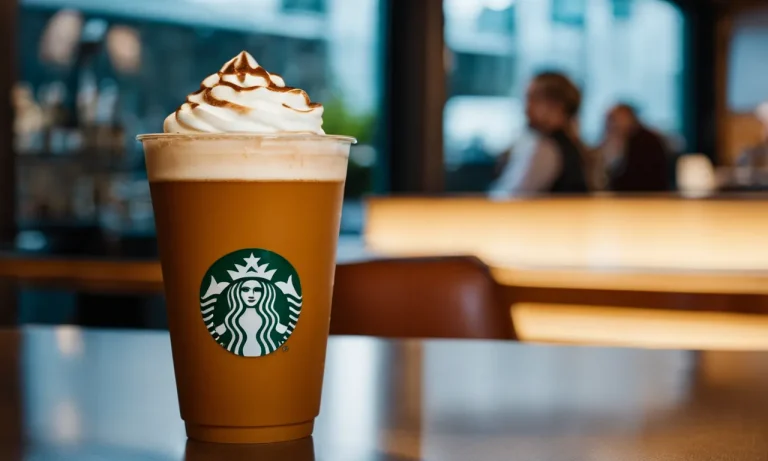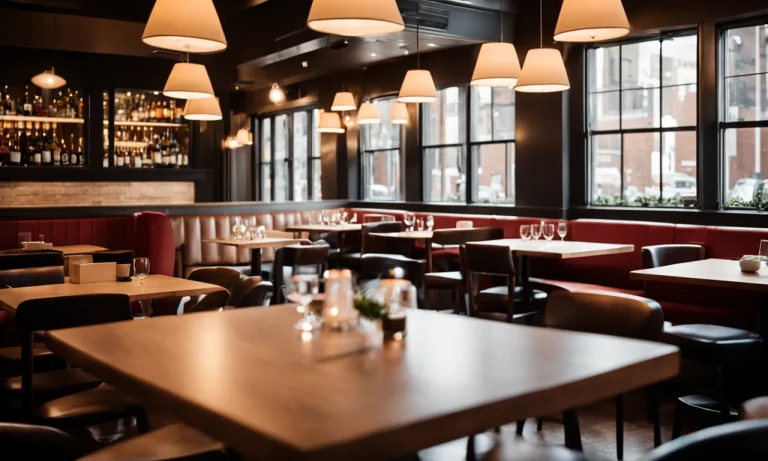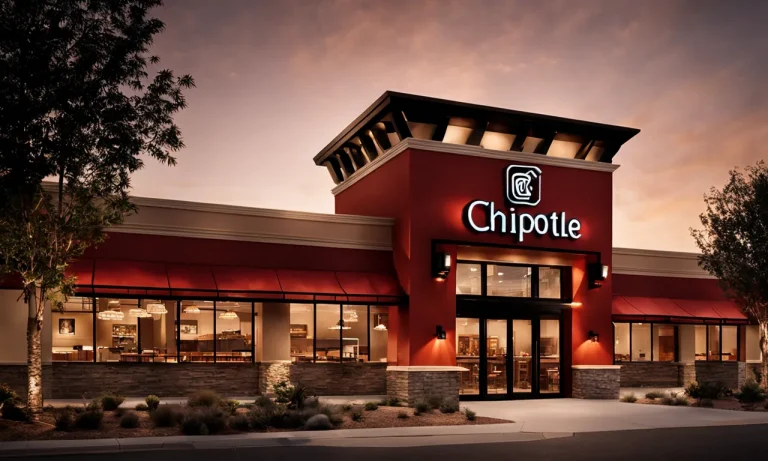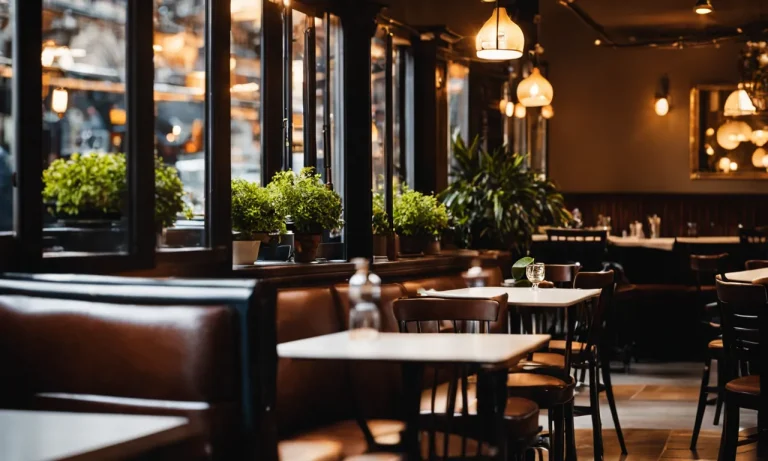Going out to eat is always a treat, but bringing home a doggy bag of delicious leftovers can extend that special experience. However, the joy of leftovers brings up an important question – how long do restaurant leftovers actually stay fresh and safe to eat?
If you’re short on time, here’s a quick answer to your question: Most restaurant leftovers can be kept 3 to 4 days in the fridge if stored properly in airtight containers. Leftovers with sauces should be eaten within 3 days, while fried rice and noodle dishes may last up to 5 days.
When in doubt, throw it out!
In this comprehensive guide, we’ll cover everything you need to know about the shelf life of restaurant leftovers. You’ll learn proper storage methods, signs of spoilage to look out for, and timing guidelines for different types of cuisine.
Proper Storage Is Key for Leftover Longevity
When it comes to restaurant leftovers, proper storage is key to ensuring their longevity and maintaining their taste and quality. By following a few simple guidelines, you can maximize the shelf life of your leftovers and enjoy them for longer.
Store in airtight containers
One important step in preserving your restaurant leftovers is to store them in airtight containers. This helps to prevent the food from being exposed to the air, which can lead to spoilage and bacteria growth.
Airtight containers also help to retain the flavors and prevent any odors from seeping into other foods in the refrigerator.
It is recommended to use containers specifically designed for food storage, such as glass or BPA-free plastic containers with tight-fitting lids. These containers not only keep your leftovers fresh, but they also make it easier to stack and organize your fridge.
Refrigerate as soon as possible
Another crucial step in prolonging the life of your restaurant leftovers is to refrigerate them as soon as possible. Leaving food at room temperature for an extended period can promote the growth of harmful bacteria, increasing the risk of foodborne illnesses.
As soon as you finish your meal, transfer the leftovers into the airtight containers and place them in the refrigerator. Aim to refrigerate the leftovers within two hours of being served to ensure their safety and quality.
Use shallow containers for quick cooling
Using shallow containers for storing your restaurant leftovers can help them cool down quickly. When food is cooled rapidly, it reduces the time it spends in the temperature danger zone (between 40°F and 140°F), where bacteria multiply rapidly.
Avoid placing large amounts of hot food directly into the refrigerator, as it can raise the internal temperature and potentially spoil other foods. Instead, divide the leftovers into smaller portions and place them in shallow containers.
This allows for faster and more even cooling, reducing the risk of bacterial growth.
By following these storage guidelines, you can extend the freshness and safety of your restaurant leftovers. Remember to always use your best judgment when deciding whether to consume leftovers, and when in doubt, it’s better to err on the side of caution and discard any questionable food.
How Long Do Specific Cuisine Leftovers Last?
American cuisine: 3-4 days
American cuisine is known for its diverse range of flavors and ingredients. From juicy burgers to hearty stews, American food has something for everyone. However, when it comes to leftovers, it’s important to keep track of how long they’ve been in the fridge.
Generally, American cuisine leftovers can last for about 3-4 days if stored properly.
Italian cuisine: 3-4 days
Italian cuisine is beloved worldwide for its rich flavors and comforting dishes. Whether it’s a plate of pasta or a slice of pizza, Italian food is always a crowd-pleaser. When it comes to leftovers, Italian cuisine can usually last for about 3-4 days in the refrigerator.
However, it’s important to note that certain ingredients, such as seafood or dairy, may have a shorter shelf life and should be consumed within a day or two.
Chinese cuisine: 3-5 days
Chinese cuisine is known for its bold flavors and wide variety of dishes. From sweet and sour chicken to flavorful stir-fried vegetables, Chinese food is a favorite for many. When it comes to leftovers, Chinese cuisine can typically last for about 3-5 days in the fridge.
However, it’s important to check for any signs of spoilage, such as a strange smell or change in texture, before consuming.
Indian cuisine: 3-4 days
Indian cuisine is famous for its aromatic spices and vibrant flavors. From curries to biryanis, Indian food is a feast for the senses. When it comes to leftovers, Indian cuisine can usually last for about 3-4 days if stored properly.
However, it’s important to note that certain dishes with dairy or meat may have a shorter shelf life and should be consumed within a day or two.
Thai/Vietnamese cuisine: 3-4 days
Thai and Vietnamese cuisine are known for their fresh ingredients and bold flavors. From spicy curries to tangy soups, these cuisines offer a unique culinary experience. When it comes to leftovers, Thai and Vietnamese cuisine can typically last for about 3-4 days in the refrigerator.
However, it’s important to note that certain ingredients, such as seafood or herbs, may have a shorter shelf life and should be consumed within a day or two.
Remember, these are general guidelines and it’s always best to use your judgment and trust your senses when it comes to consuming leftovers. If you’re unsure about the freshness of a particular dish, it’s better to err on the side of caution and discard it.
For more information on food safety and storage, you can visit the FoodSafety.gov website.
Watch Out for These Signs of Spoilage
Unpleasant odors
One of the first signs that leftovers may be spoiled is a foul or off-putting smell. If you open the container and are greeted with a strong, unpleasant odor, it’s a clear indication that the food is no longer safe to eat. Trust your sense of smell and don’t take any chances.
Change in texture or consistency
Another sign of spoilage is when the texture or consistency of the leftover food has changed. For example, if your once crispy French fries have become soggy or your pasta has turned mushy, it’s best to err on the side of caution and discard the leftovers.
Changes in texture can be a result of bacterial growth or the breakdown of fats and proteins in the food.
Mold growth
One of the most obvious signs of spoilage is the growth of mold on the surface of the leftovers. Mold thrives in warm and moist environments, so if you notice any fuzzy patches or green, black, or white spots on your food, it’s a clear indication that it has gone bad.
Mold can produce toxins that are harmful to your health, so it’s important to discard any food with visible mold growth.
Discoloration
Discoloration is another sign that leftovers may no longer be safe to eat. If you notice any significant changes in color, such as meat turning brown or vegetables becoming slimy and discolored, it’s a red flag that the food has started to spoil.
Discoloration can be caused by oxidation or the growth of bacteria, so it’s best to play it safe and throw out any food that doesn’t look right.
Remember, when in doubt, throw it out! It’s always better to be safe than sorry when it comes to consuming leftovers. If you’re unsure about the freshness or safety of any food, it’s best to err on the side of caution and discard it.For more information on food safety and storage guidelines, visit the website of the Food and Drug Administration (FDA) at www.fda.gov.
Reheating Tips to Restore Restaurant Flavors
Use the oven or stove, not the microwave
When it comes to reheating restaurant leftovers, using the oven or stove is often the best way to maintain the original flavors and textures of the food. While the microwave may be convenient, it can sometimes result in soggy or unevenly heated dishes.
By using the oven or stove, you can ensure that your leftovers are heated evenly and retain their delicious taste.
For example, if you have leftover pizza, placing it in the oven at a low temperature (around 275°F or 135°C) can help restore its crispy crust and melty cheese. Similarly, reheating pasta on the stovetop with a splash of water or sauce can prevent it from becoming dry or clumpy.
Bring sauces to a simmer
One common mistake when reheating restaurant leftovers is not properly reheating sauces. Many sauces, such as marinara or Alfredo sauce, can separate or become watery when reheated incorrectly. To avoid this, it’s best to bring sauces to a simmer on the stovetop.
Simply heat the sauce in a saucepan over low heat, stirring occasionally, until it reaches a gentle simmer. This will help to thicken the sauce and ensure that all the flavors are well incorporated. Plus, it gives you an opportunity to adjust the seasoning if needed, adding a pinch of salt or a sprinkle of herbs to enhance the taste.
Re-crisp fried foods in the oven
Leftover fried foods, such as French fries or chicken tenders, can lose their crispy exterior when reheated. However, there’s a simple trick to bring back their crunchiness – using the oven.
Preheat your oven to a high temperature, around 425°F (220°C), and spread the fried foods in a single layer on a baking sheet. Place the sheet in the oven and let them cook for a few minutes until they become hot and crisp again.
This method helps to preserve the original texture and flavor of the fried foods, making them taste just as good as when you first enjoyed them at the restaurant.
Remember, while reheating leftovers can be a great way to enjoy restaurant flavors at home, it’s important to prioritize food safety. Make sure to refrigerate leftovers promptly, and if in doubt, follow the general guideline that most cooked foods can be safely consumed within 3-4 days.
For more tips and information on food safety and reheating leftovers, you can visit www.foodsafety.gov.
Conclusion
With proper refrigeration and storage methods, you can safely enjoy most restaurant leftovers for 3 to 4 days. Pay attention to any changes in smell, texture, or appearance that could indicate spoilage. If in doubt, it’s always better to be safe and toss it out.
With the right reheating techniques, you can bring those tasty leftovers back to life. Following these guidelines will keep your doggy bags delicious for days to come!






